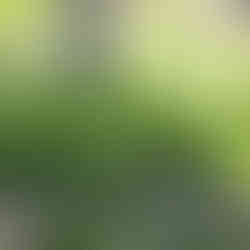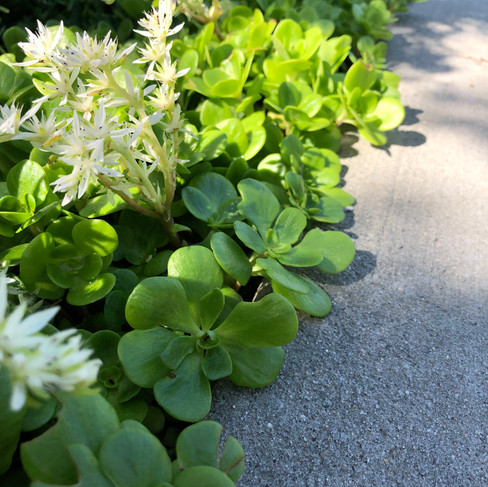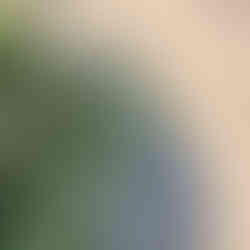Brooklyn Bridge Park: The Ecosystem on Piers
- Nuts for Natives
- May 18, 2022
- 3 min read
Plants Native to the Chesapeake and Ideas!

Rebecca McMackin is the horticultural director of this ten year old park, just recently completed, featuring 85 acres of parkland and, incredibly, built atop 6 former shipping piers along the shoreline of New York City's East River. To hear her infectious enthusiasm for the Brooklyn Bridge Park – a flower garden and a woodland on piers bookending swimming, soccer and entertainment piers in between – is to be drawn into this ecosystem on docks. It drew me in like a ladybug to golden alexanders!
On one of the first warm sunny Sunday afternoons of the year, the park was abuzz with volleyball matches, strollers, family gatherings and soccer games. This beehive of activity sat amidst 85 acres of mostly native plants, themselves abuzz with pollinators. So what does this have to do with the Chesapeake? Rebecca McMackin says we are in the same EPA ecoregion, a designation that very loosely groups similar ecosystems together. Many plants that thrive in the conditions of this park may also do well in our gardens.

The 1/2 acre meadow on Pier 6, the pier farthest to the south, is a pollinator haven covered in blooming flowers throughout the growing season. In full sun, spring blooming golden ragwort (Packera aurea) created a river of golden yellow. Interesting, because in the central Chesapeake, golden ragwort is usually recommended for shade. I checked the Park's native plant database and they recommend it for full sun to full shade and even say it can take light foot traffic. Good to know!

Adjacent to the beach volleyball courts, trees were underplanted with a beautiful mix of blue star (Amsonia hubrichtii) just beginning to bloom, white violets in full bloom and lavender woodland phlox (Phlox stolonifera). Blue star is native to small parts of the southeast. There was also a shorter amsonia that looked more like the Eastern blue star (Amsonia tabernaemontana) native to the Chesapeake. I believe this may be dwarf Eastern bluestar (Amsonia tabernaemontana ‘Short Stack,’) a cultivar that grows to a foot high. The Park recommends planting larger sizes of blue stars, likely because they are slow growers.
Pure white wild violets just sparkled, even in the dappled shade. The clear white was so bright I needed shades! My best guess is these were white birdfoot viola (Viola pedata). These violets can be purple, blue or white. The Park's database does list another while violet, viola striata, but that has thin blue markings at the throat of the flower and these were a clear white. Really striking.

Evergreen inkberries (Ilex glabra) grow throughout the hedgerows and thickets edging the walking and biking trails connecting the piers and creating the linear part of the park that hugs the shoreline. Many were under planted with aromatic sumac 'Gro-low' (Rhus aromatica "Gro-Low') The two plants create excellent foliage contrast, are low maintenance and easy to grow in sun or part shade. This is a great combo to form a native hedge in a home garden. The evergreen inkberry will provide some screening all year long and in the fall, bright yellow sumac foliage will shine like crazy in front of the dark green inkberry.
Summersweet (Clethra alinfolia), ninebark (Physocarpus opulifolius) and chokeberry (Aronia arbutifolia) shrubs dotted the thickets. The dried grey seed heads of summersweet added an ethereal quality to the sea of greens. Ninebarks were just beginning to bud up. These look like the straight species which has green leaves. Many ninebark cultivars sold in garden centers have yellow and maroon colored leaves which likely provide less insect habitat according to scientists. The chokeberries with their small white flowers were in full bloom.

Finding just the right place for delicate eastern columbine (Aquilegia canadensis) with red flowers amid the many pale lavenders of the native spring flowers can be a challenge. Here, though, the low moss phlox (Phlox subulata), backed by the columbine with golden alexanders (Zizia aurea) behind looked just right.
These two very low growing ground covers are easy to grow, spread where they are happy and create a living mulch. Three-leaf stonecrop (Sedum ternatum) grows in shadier conditions while pussytoes (Antennaria plantaginifolia) grows in full sun and even in poor soils. The only drawback is both are so low, they can be hard to see. I thought it was clever the Park used them as edging in elevated containers, making them far more visible!

Golden alexander is a long blooming flower emerging in spring and blooming right through to early summer. Here it grows between the path and a marsh garden. Really stunning.

One of the more brilliant aspects of this Park is that these native plants are all widely available and accessible at native plant nurseries. To learn more about ecological gardening in Brooklyn Bridge Park, check out this podcast with Joe Lamp'l in conversation with Rebecca McMackin part 1 and part 2. In the meantime, thanks for creating your own ecological garden!





























Comments